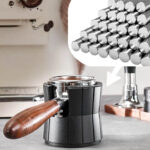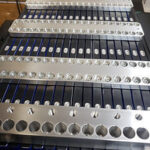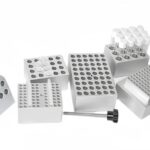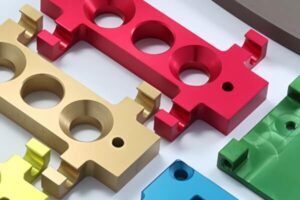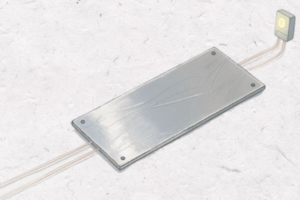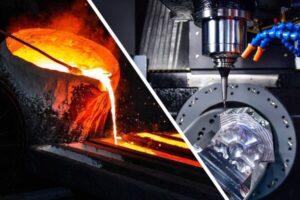CNC machining is known for its precision and speed in making metal parts. But, it can do more than just metal. The question “is CNC only for metal?” is common, but CNC can work with plastics and composites too. This article will show how CNC can change the game for many industries, not just metal ones.
Let’s explore the world of CNC machining together. We’ll see the materials and uses that show CNC’s true potential.
Understanding CNC Machining Basics
CNC machining has changed many industries by making manufacturing easier. It uses computers to control tools and make precise parts. Knowing how CNC machining works shows its importance in today’s world, where quality and speed matter.
What is CNC Machining?
CNC machining, or Computer Numerical Control machining, is a way to make parts using computers. It lets manufacturers make parts that are very accurate and the same every time. CNC machines use CAD models to follow design plans and make detailed parts.
The General Process of CNC Machining
The CNC machining process has a few main steps:
- Designing a CAD model, making sure it meets the needed precision.
- Programming the CNC machine with G-code, which tells it what to do.
- Setting up the machine, which includes putting in the material and tools.
- Executing the machining process, where the CNC technology makes the parts according to the design.
Key Components and Technology Behind CNC
Several important parts and technologies make CNC machining work:
- CNC Routers: Great for working with wood and softer materials, they’re very versatile.
- CNC Lathes: Used for making cylindrical parts, they provide smooth and precise cuts.
- CNC Mills: Handle complex shapes and are used in many industries.
Top CNC technology includes advanced software and automation. Online CNC services help businesses make production better and cheaper. This makes making precise parts easier for everyone.

| Component | Function | Materials Used |
|---|---|---|
| CNC Router | Carves and shapes materials | Wood, plastic, soft metals |
| CNC Lathe | Creates cylindrical parts | Metals, plastics |
| CNC Mill | Mills out complex shapes | Metals, composites, plastics |
The Common Perception: CNC and Metal
CNC machining is often linked with metal. This is because metals like aluminum and steel are strong and durable. They are perfect for many uses. Knowing why metal is popular in CNC machining helps us see its importance in making things.
Why Metal is a Popular CNC Material
Metals are great for CNC machining for several reasons. They can handle a lot of stress and harsh conditions. This makes them last longer. Some key benefits include:
- High tensile strength, providing resilience in demanding applications.
- Corrosion resistance, particularly in metals like stainless steel.
- Versatility, as different types of metals can be machined to fit various specifications.
Industries Relying on Metal CNC Machining
Many industries need CNC machining for metal parts. Some of these include:
- Aerospace: Precision components are essential for safety and performance.
- Automotive: Metal parts are crucial for both functionality and safety features.
- Manufacturing: Multiple industries utilize metal parts for efficiency and reliability.
Advantages of CNC for Metal Fabrication
CNC technology in metal fabrication has many benefits:
| Advantage | Description |
|---|---|
| Precision Tolerances | CNC machining offers remarkable accuracy, ensuring that each part meets exact specifications. |
| Efficiency | Automated processes reduce manufacturing time while increasing production volume. |
| Repeatability | The consistent output ensures that every batch of parts maintains uniform quality. |

Breaking the Myth: CNC for Non-Metal Materials
CNC machining is often seen as only for metals. But, non-metal CNC applications are growing. Plastic CNC machining is a strong and flexible choice. This section looks at non-metal materials for CNC, showing options beyond metals and solving common problems in machining shops.
Plastic CNC Machining: A Viable Alternative
Plastic CNC machining is becoming more popular. ABS, PVC, and polycarbonate are used because they’re light and strong. They can be shaped into complex parts, perfect for many uses like prototypes and production.
These plastics can be easily changed and recycled. This makes them great for modern manufacturing.
Other Non-Metal Materials Suitable for CNC
There are many non-metal materials that CNC can work with. Wood is chosen for its beauty. Composites offer great strength and are used in many fields, from aerospace to cars.
Foam materials are also popular for being light and for insulation. These options show the wide range of possibilities in CNC machining.
Overcoming Challenges in Non-Metal CNC
Non-metal CNC machining has its challenges. Materials can melt or burn unevenly during machining. Choosing the right tools is key to precision and avoiding damage.
Adjusting speeds is also important for non-metal materials. Using advanced CNC services helps solve these problems. It offers custom solutions for better results.
| Material Type | Characteristics | Common Applications |
|---|---|---|
| ABS | Durable, impact-resistant, lightweight | Automotive parts, consumer electronics |
| PVC | Weather-resistant, versatile | Piping, fittings, signage |
| Polycarbonate | High-impact resistance, clarity | Optical lenses, safety equipment |
| Wood | Aesthetically pleasing, easy to work with | Furniture, cabinetry |
| Composites | Lightweight, strong, customizable | Aerospace, automotive components |
Plastic CNC Machining: In-Depth Look
Plastic CNC machining is great for making high-quality parts. It uses various plastics to create precise components. This is useful in many industries. Knowing about plastic CNC can help businesses use it well.
Types of Plastics Used in CNC Machining
Plastics have different properties for CNC machining. Here are some common ones:
- Acrylic: Known for its clarity and strength, acrylic is often used in signage and display applications.
- Nylon: Offers excellent durability and chemical resistance, making it ideal for mechanical parts.
- Polyethylene: Lightweight and flexible, it’s used in various consumer product applications.
Benefits of Plastic CNC Machining
Plastic CNC machining has many benefits. Some key advantages include:
- Cost-Effective: Plastic materials usually cost less than metals, reducing overall project expenses.
- Lightweight: The lower weight of plastic parts works well for applications where reducing mass is beneficial.
- Versatility: Plastics can be easily molded into complex shapes, enhancing design possibilities.
Applications of Plastic CNC Machined Parts
Plastic CNC parts are used in many areas. Some examples include:
- Consumer Products: Many everyday items such as containers and casings are made from CNC machined plastics.
- Medical Devices: Precision parts for medical instruments require high-quality plastic machining.
- Prototyping: Rapid prototyping of products ensures faster development cycles for new ideas.
How Plastic CNC Differs from Metal CNC
Plastic CNC and metal CNC share some similarities but also have differences. Key differences include:
- Machining Techniques: Plastic machining often requires different tooling and speeds compared to metal.
- Material Properties: Plastics behave differently under heat and pressure, influencing machining settings.
- End Product Characteristics: Finished plastic parts may differ significantly in strength and durability compared to their metal counterparts.
Factors to Consider When Choosing CNC Materials
Choosing the right materials for a CNC machining project is key. It’s important to know the material’s properties, like strength and flexibility. These affect how the material can be machined.
For example, strong materials might need more powerful CNC machines. On the other hand, flexible materials like plastic can open up new design possibilities. This ensures the material fits the project’s needs.
It’s also crucial to weigh the cost of metal versus plastic CNC. Metal is durable, but plastic can be cheaper and still deliver good results. Knowing your budget helps decide which material to use.
Investing in quality materials can pay off in the long run. But, choosing cost-effective options like plastic can also save money without sacrificing quality.
Design constraints from the chosen materials are also important. Different materials can limit design options or require specific machining techniques. For example, plastics are easier to shape for complex designs, while metals need stronger tools.
Being aware of these constraints helps plan better. It ensures the final product is both high-quality and functional.




